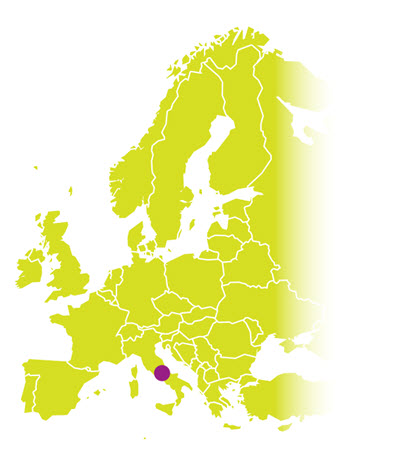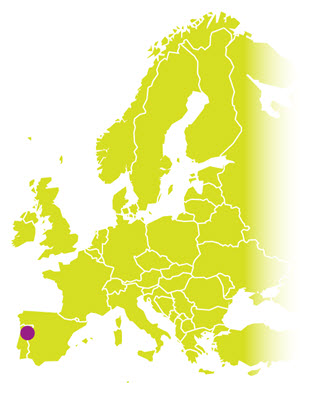The Rewilding Europe initiative
Contents
Rewilding Europe is a non-profit organisation based in the Netherlands. It was founded in 2011 by Frans Schepers, Staffan Widstrand, Neil Birnie and Wouter Helmer to create rewilded landscapes in Europe. Today, the organisation works with a rich network of partners – both locally, regionally and at the governmental level.
In addition to their work with rewilding areas throughout Europe, Rewilding Europe is also involved in the Taurus project, where the aim is to use existing cattle breeds to breed-back to something that would be very similar to the aurochs that once roamed the open grasslands of Europe.
Rewilding Europe areas
By 2021, Rewilding Europe was working with eight different rewilding areas across Europe.
Central Apennines rewilding area (Italy)
 The Apennies are a mountain range running along the length of peninsular Italy. Compared to the northern and southern segments, the central Apennines are thicker and more complex, with an outer and an inner arc. The central Apennines includes several ecosystems and exhibits a high degree of biodiversity. Here, Rewilding Europe is working chiefly with the creation of four ”coexistence corridors” that will connect the already protected areas with each other, while also promoting the local economy. He main protected areas are the Abruzzo and Majella National Parks and the Sirente Velino Regional Park.
The Apennies are a mountain range running along the length of peninsular Italy. Compared to the northern and southern segments, the central Apennines are thicker and more complex, with an outer and an inner arc. The central Apennines includes several ecosystems and exhibits a high degree of biodiversity. Here, Rewilding Europe is working chiefly with the creation of four ”coexistence corridors” that will connect the already protected areas with each other, while also promoting the local economy. He main protected areas are the Abruzzo and Majella National Parks and the Sirente Velino Regional Park.
A branch of the project is focused on reducing the problem with bears on the roads, by improving signage and replacing old fencing with mobile electric fences.
Greater Côa Valley rewilding area (Portugal)
 This rewilding area is located in Portugal, in the border region towards Spain. Many farmers have left the area and much less cattle live here now than before. To bring back grazing, Rewilding Europe is promoting the presence of semi-wild livestock such as feral sturdy horses and cattle.
This rewilding area is located in Portugal, in the border region towards Spain. Many farmers have left the area and much less cattle live here now than before. To bring back grazing, Rewilding Europe is promoting the presence of semi-wild livestock such as feral sturdy horses and cattle.
Grazing is partly promoted as a way to keep the landscape open to reduce the risk of forest fires, but Rewilding Europe also hopes that keeping the grass (instead of allowing the land to become forest) will encourage wild populations of roe deer and make it possible to reintroduce the Iberian ibex.
There is also plans to increase the number of wolfs, create a green corridor and promote ecotourism.
Swedish Lapland rewilding area (Sweden)
Rewilding Europe is working with fishing associations on the Råne and Piteå rivers. The aim is to boost fish migration through river restoration, spawning ground restoration and the removal of artificial obstacles. Sonar-based fish counters are now being used on the rivers to keep track of progress.
Rewilding Europe is also supporting eco tourism businesses, with a focus on fishing and otter watching, plus Sami-run wildlife tourism and guided reindeer tours. (The Sami are an indigenous people in this region.)
Danube delta rewilding area (Romania)
The Danube delta is home to a wide variety of birds; some live her year round while others winter here. It is also an important stop for migrating birds. The Danube river flows from the Black Forest to the Black Sea; the greater part of the delta is in Romania, with the rest being in Ukraine.
Rewilding Europe is currently working to improve the ecological integrity of 40,000 hectares of wetland and terrestrial delta habitat here, with a focus on natural flooding and continuos grazing. The project is linked to the Tauros breeding programme. Grazing animals help keep the landscape open, which is appreciated by many delta-living birds.
Oder delta rewilding area (Poland & Germany)
In the Oder delta rewilding area, Rewilding Europe runs several pilot projects in conjunction with local partners. Some of them are focused on the restoration of fish population and the removal of barriers that are limiting fish migration in the Stettin Lagoon and its associated rivers.
The delta is famous for its special mosaic combination of terrestrial, marine and freshwater habitats, and includes nearly 70,000 hectares of lagoon environment. By helping to create green tourism jobs in the region, Rewilding Europe hopes to boost local support for the rewilding of the delta.
Southern Carpathians rewilding area (Rumania)
The Southern Carpathians, also known as the Transylvanian Alps, already contain over 1 million hectares of protected areas and is famous for its biodiversity and functional ecosystems. Here, relatively wild landscapes exist in conjunction with traditional farming and grazing practises.
Rewilding Europe and its partners (including WWF Romania) has selected the Southern Carpathians as a site for reintroducing the European bison. The aim is to have genetically viable free-roaming bison populations here. In 2014-2017, new bison individuals were released here each year.
Velebit rewilding area (Croatia)
This rewilding area is located in the mountains along Croatia´s Adriatic coast, within a region that is considered one of the wildest parts of the whole Mediterranean region. Two national parks and a biosphere reserve are already present here, and the wildlife includes species such as Balkan chamois, wolf, brown bear, and lynx.
The establishment of the 17,000 hectare Velebit Nature Reserve was the work of Rewilding Europe and its partners. This reserve is situated between two large national parks, which makes it especially important for the work with green corridors.
Currently, Rewilding Europe is working together with the University of Zagreb´s Faculty of Forestry to have the Ramino Korito old-growth beech forest designated a special woodland reserve.
Rewilding Europe also works with introducing grazing semi-wild cattle to the Lika Plains, grasslands situated in the foothills of the Velebit Mountains.
Rhodope Mountains rewilding area (Bulgaria)
The Rhodope Mountains rewilding area in Bulgaria is important for a variety of species, including black vultures and griffon vultures.
You can read more in our article about the Rhodope Mountains.